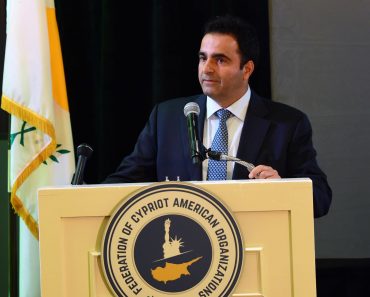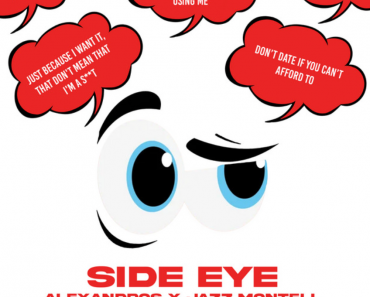
On July 18, Oregon pianist and composer Jennifer Wright premiered her “Long Strings” project with two performances at Zidell Yards. Using discarded junk and equipment she found lying around the former ship-breaking yard, Wright built a large ensemble of instruments and composed music specifically for these hand-built instruments. Wright described the concert as a “Program of Much-ness,” as each instrument saw plenty of playing time through the night.

“Long Strings” is a successor to Wright and Laura Cannon’s Break to Build project, which happened at Zidell Yards back in 2023. Two of the instruments “featured in Long Strings” were originally featured at Break To Build: the “Kelp Forest” and the “Hanging Gamelan.”
“Long Strings” featured an array of instruments constructed from parts found around the property. Rusted hooks, chains, wires, railroad spikes, and other ship-breaking ephemera were transformed into instruments and relics of bygone industry. Their extravagance and size was impressive, and one could picture some of the smaller instruments finding their way onto someone’s front lawn, as an oddity to catch the attention of passers-by.

Jennifer Wright is artist-in-residence at Zidell Yards – much like Deena T. Grossman as composer-in-residence with the environmental group Columbia Riverkeeper. I asked Wright how she came to be the artist in residence at Zidell, and this is what she told me:
“Three years ago, dancer Laura Cannon of ProLab Dance invited me to be the musical director and co-producer of an activation she wanted to present at Zidell, which began as an amorphous idea and resulted in the show ‘Break to Build’ two summers ago. That’s when I began spending a ton of time onsite, exploring the many acres for performance potential, playing with all the debris laying around, and designing sonic/visual vignettes to ground the dance and aerial routines in that show. The next year, we created a second ‘Break to Build’ show that expanded on our original ideas. But I still had a ton of ideas that I wanted to explore (and still do! I’m definitely not done at Zidell yet) and wanted to focus on a purely sonic experience. Being officially invited by the Zidell family to be Artist/Composer in Residence has been helpful in pursuing grant funding for my activations there.”

I also asked Wright about how she built the instruments from the site’s detritus. She told me how she works with the Zidell people on implementing her vision:
“Whenever I want to build/move/create/film/record something at Zidell, I generally do a lot of R&D to get my plans together and then formulate an ask. They don’t mind if I move small things around (anything I can actually move by myself) as long as I keep things generally tidy-ish, since there are lots of other folx who use the barge building and grounds for various purposes (though none perhaps so obscure and fun as mine). I used to ask about every tiny piece of scrap – ‘Is it OK if I use this rusty bolt? Can I drag this old chain from here to there?’ – and they would laugh and say, ‘Go ahead. It’s all junk to us!’ They were amused that I found so much joy and excitement in things that they no longer saw as useful! For me, it’s a paradise of aesthetic abundance. I could keep exploring it for years and not feel done.”
Crows in the rafters, stones on the seats

When the show started, a crow flew overhead through the rafters. A strong summer breeze occasionally slid through the audience, creeping toward the end of the massive warehouse. The building itself almost became its own instrument during these gusts, contributing its own ghostly howl to the music. Waiting on each seat in the audience were two small stones – perhaps a cheery offering, but their purpose would become clear by the end.
Wright’s artistic practice combines deep ecology with a DIY spirit of instrument-building. The music is composed specifically for the instruments she builds from recycled matter that become pieces of found art – the sorts of things one sees in the front yards of many Portland homes. It reminds me of Harry Partch and Lou Harrison, or Cheryl Leonard. The intention with such works is to let the audience hear the world differently. Much as Luigi Russolo predicted, the machinery of industrialization would haunt the future of music.




There’s a long history of ordinary objects becoming musical instruments. Washboards are a huge part of bluegrass and Zydeco music. Cowbells, wind chimes and brake drums can be found in any high school band room. The oldest instruments we know of were made from bone, dried reeds, bamboo stalks, and animal hides, carved and stretched into song-creation tools.
The eponymous “Long Strings” – some as long as one hundred and sixty feet – formed the central instrument, called Arachne. Wright invoked Arachne not as an instrument, but as a feminine deity. This being scoffs at the notion that one ought only to dream small and work pragmatically. When others ask, “Why?” Arachne responds with a question of her own: “Why not?”
Early in the program, Wright demonstrated Arachne’s sonic potential with a brief piece titled I Do Not Accept These Limitations You Set. Wright carefully stepped over and under the strings lest she disturb the instrument’s peace. She scraped the strings with two violin bows, creating a soundscape of creaks, squeaks, scrapes, pings, and ominous ship-creaking drones. Tapping the wood against the wire sounded like a science-fiction blaster. (In fact, a similar technique was used by Foley artists on the original Star Wars films.)
The instrument saw its most extensive use in the piece with the same name, Arachne, from near the end of the program. Wright offered an alternate interpretation of the Greek myth from Ovid’s Metamorphoses. The usual gloss is that Arachne’s weaving battle with Minerva is a cautionary tale, warning us not to upstage the gods. For her hubris, Arachne is transformed into a spider. In Wright’s retelling, Arachne is rather an aspirational figure, assured in her skill and creativity, that is brought down to earth by the jealous gods. The gods, like the forces they personify, are fickle and elusive. They create and destroy with equal zeal.

Sparks were indeed thrown for the piece Throwing Sparks, as Wright and Lucas Marshall Smith donned safety glasses and danced around the “Cloud Gamelan.” Striking the metal plates with steel rods created these impressive sparks that would shoot off and die with a satisfying pop. Wright and Smith engaged in a playful back-and-forth before joining forces for a mid-tempo groove.
The following piece, You Cannot Liberate Me, Only I Can Do That For Myself, emerges from a drone with a pair of E-Bows on a prepared harpsichord. The preparations gave some notes a nice percussive clack. Some passages were reminiscent of a Phrygian melismatic incantation, others like a Baroque toccata.



The centerpiece of the program was On this Bridge Between Starshine and Clay, by Lucas Marshall Smith — an impassioned and polemical outburst of political rage. Smith gave an intense performance of dramatic readings from political theory and speeches from famous dictators of the past and present, separated by screams, croaks and sharp blasts of harsh noise.

The juxtaposition was very on-the-nose, but some messages need to be direct and obvious. The cello part, excellently played by Diane Chaplin, was mostly dissonant and used jeté and sul ponticello bowings for great effect. The readings from The Communist Manifesto at the bookends were a nice bit of political invective, and the lengthy piece ended on an optimistic note after all that fire and fury.
Paul Safar joined Wright for The Albatross, a modal tune for Safar’s buzzing hurdy-gurdy and two of Wright’s new instruments: a sonified steel plate and the titular Albatross. This wearable instrument was a giant piece of neckwear, dotted with dangling clips, springs and washers painted red. Wright dragged them across the sonified plate to create ominous textures behind the hurdy-gurdy tunes.

The piece and the instrument were inspired by this Samuel Taylor Coleridge poem, and as Wright says in the program, the music “represents the multitudes of small retreats that I have accrued over a lifetime, a tangled net of little sadnesses that I carry with me wherever I go.”
Safar would return for Deep Time, which was a beautiful drone piece for hurdy-gurdy, Wright on harpsichord and conch shell, and Smith on the “Long Strings” adding some crunchy texture.

This would lead us into the final work on the program, Joy as an Act of Radical Resistance. The title comes from a poem by Toi Derricotte, and its succinct and inspiring opening line has become a common phrase – British punk band Idles named an album after it. The piece was an audience-participation noisemaking frenzy, as we clacked and scraped the rocks on our seats together with four musicians going crazy on the gamut of instruments.
Greek gods, myths and music

Mythological themes abounded in “Long Strings.” The instruments bear names such as the “Remnant Chimes,” “Ceremonial Bound Gong,” “Arachne,” “Steel Mandala,” and “Ouroboros.” One could say that Wright is not just building “a profusion of SOUND MACHINES,” but enacting an alchemical transformation.
She doesn’t just create instruments but also totems, gifts to the muses, physical manifestations of great powers; and she largely treats those instruments with reverence in the way she composes for them. Wright and Smith also weren’t shy about the environmental and political themes of the music.
The thirty-three-acre property was once the home of a massive shipbreaking and barge construction business. After the Zidell Company closed down in 2017, the site became an events space for socially-distanced concerts. It’s also been the home to an annual motorcycle show for sixteen years.


Back in May, a trio of Egyptian-American artists (composer Ryan Francis, writer Nabra Nelson and filmmaker Tracy Francis) working under the name Pyramid Scheme used Zidell Yards as the spot for their Oculus Anubis project. The project took audiences on a walking tour of the property as if it were the infamous property in Damascus, combining mock advertisements, conspiracy podcasts, graffiti, yoga spa retreats and New Age music into a unique experience.
These are the sorts of strange and intriguing works allowed to exist at Zidell Yards, and Wright has certainly taken advantage of the opportunity.
Lots of great art gets made in outside-the-box spaces, and Portland abounds with relics of the city’s industry turned into spaces where the city’s artists can flourish. But as the economy churns forth, these spaces are always under the threat of redevelopment.
The Zidell Yards property under the Ross Island bridge could become the home of a Major League Baseball stadium in the future. This would give Northwest baseball fans someone to cheer for that isn’t the chronically under-performing Seattle Mariners, but that would mean the loss of the Zidell Yards space for weird, unique arts projects such as “Long Strings.” (If you want to learn more about the history and future of Zidell Yards as a site for music and dance, read Jamuna Chiarini’s article in DanceWatch.)











-370x297.png)